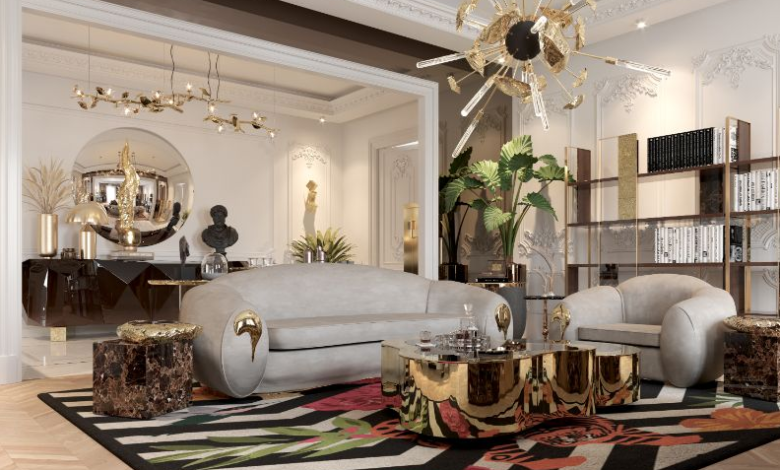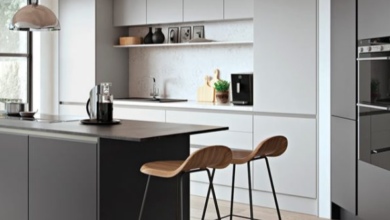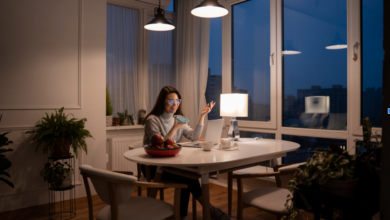Why Your Brain Craves Modern Luxury Furniture

Neuroscientists have discovered something fascinating about how our brains respond to beautiful objects. When people encounter exceptionally designed furniture, their neural pathways light up in the same regions associated with pleasure and reward. It’s hardwired human biology responding to proportion, symmetry, and quality craftsmanship. Understanding why modern luxury furniture triggers these powerful neurological responses reveals profound truths about human psychology and our innate need for beauty in daily life.
Your Brain’s Response to Beautiful Design
Every time someone walks past a piece of exceptionally designed furniture, their brain releases small amounts of dopamine. It isn’t accidental; it evolved over millennia as humans developed the ability to recognize quality, symmetry, and proportion as indicators of value and safety.
Modern luxury furniture designers intuitively understand the perfect curve of a chair back, the precise proportion of a table’s legs to its surface, the satisfying weight of a drawer that glides smoothly closed – these details create micro-moments of pleasure that accumulate throughout the day. Living with beautiful furniture means experiencing hundreds of small dopamine releases that collectively improve mood and life satisfaction.
Texture and Material Psychology
Modern luxury furniture recognizes the biological reality of tactile experiences by prioritizing materials that feel as good as they look. The cool smoothness of polished marble, the warm grain of quality wood, the supple texture of full-grain leather: these tactile experiences create sensory satisfaction that cheap furniture simply cannot replicate.
Interestingly, research shows that people unconsciously touch furniture far more often than they realize. A hand trailing across a tabletop while walking past, fingers absently tracing chair arms during conversation, palms pressing against armrests when standing, these micro-interactions happen dozens of times daily. When those touches encounter quality materials, they create positive sensory feedback that influences mood and comfort.
Why Perfect Measurements Matter More Than You Think
The golden ratio appears repeatedly in nature and in furniture designs that people consistently describe as beautiful, even when they can’t articulate why. Modern furniture often incorporates these proportional relationships unconsciously, creating pieces that satisfy deep aesthetic needs.
Room proportions interact with furniture dimensions in complex ways that affect spatial perception and psychological comfort. A sofa that’s slightly too large for a room creates subtle anxiety, while perfectly proportioned pieces make spaces feel larger and more comfortable than their actual dimensions suggest. Professional furniture designers spend years developing the ability to judge these proportional relationships intuitively.
The height of seating relative to tables, the depth of sofas compared to their width, the visual weight of furniture legs supporting horizontal surfaces: these measurements affect everything from physical comfort to the subconscious ease people feel in spaces. Getting proportions right represents the difference between furniture that merely functions and pieces that create genuine comfort and beauty.
Social Psychology of Furniture Choices
Humans are intensely social creatures who communicate identity and values through environmental choices. Furniture selections broadcast messages about taste, priorities, and success that other people unconsciously decode within seconds of entering a space. This social signaling function of modern furniture explains why people often feel differently about themselves when surrounded by beautiful pieces.
Quality furniture creates positive social dynamics that extend beyond mere impression management. When hosts feel confident about their furnishings, they exhibit more relaxed, genuine hospitality. Guests seated on comfortable, beautiful furniture unconsciously attribute those positive feelings to their hosts, strengthening social bonds. These psychological dynamics affect friendship formation, romantic relationships, and even professional networking in ways that seem disproportionate to simple furniture choices.
Economics of Quality
Mathematical analysis reveals that quality furniture represents superior financial logic compared to repeatedly purchasing cheaper alternatives. A well-constructed piece lasting thirty years costs significantly less annually than replacing budget furniture every five years, even before considering the psychological and aesthetic benefits of living with beautiful objects daily.
The resale market for quality furniture further validates investment logic. Exceptional pieces often retain fifty percent or more of their original value, while mass-market furniture becomes essentially worthless within months of purchase. This retained value provides financial flexibility that transforms furniture from pure expense into asset ownership.
See also: Maximize Home Value with High-Quality Floor Installation Services
The Luxe Decorum Understanding
Luxe Decorum recognizes that modern furniture represents far more than decorative objects; it encompasses neurological satisfaction, tactile pleasure, proportional harmony, social signaling, and intelligent investment. Their collections reflect a sophisticated understanding of these multiple dimensions of furniture quality.
Conclusion
The human response to modern luxury furniture involves complex interactions between neurology, psychology, social dynamics, and practical economics. Understanding these multiple dimensions reveals why investing in exceptional furniture represents one of the most impactful decisions people make about their living environments. Beautiful, well-crafted pieces shape daily experiences, influence psychological well-being, and create environments that genuinely support better living. The science confirms what many intuitively know: surrounding yourself with quality creates measurable improvements in life satisfaction that extend far beyond mere aesthetics.




